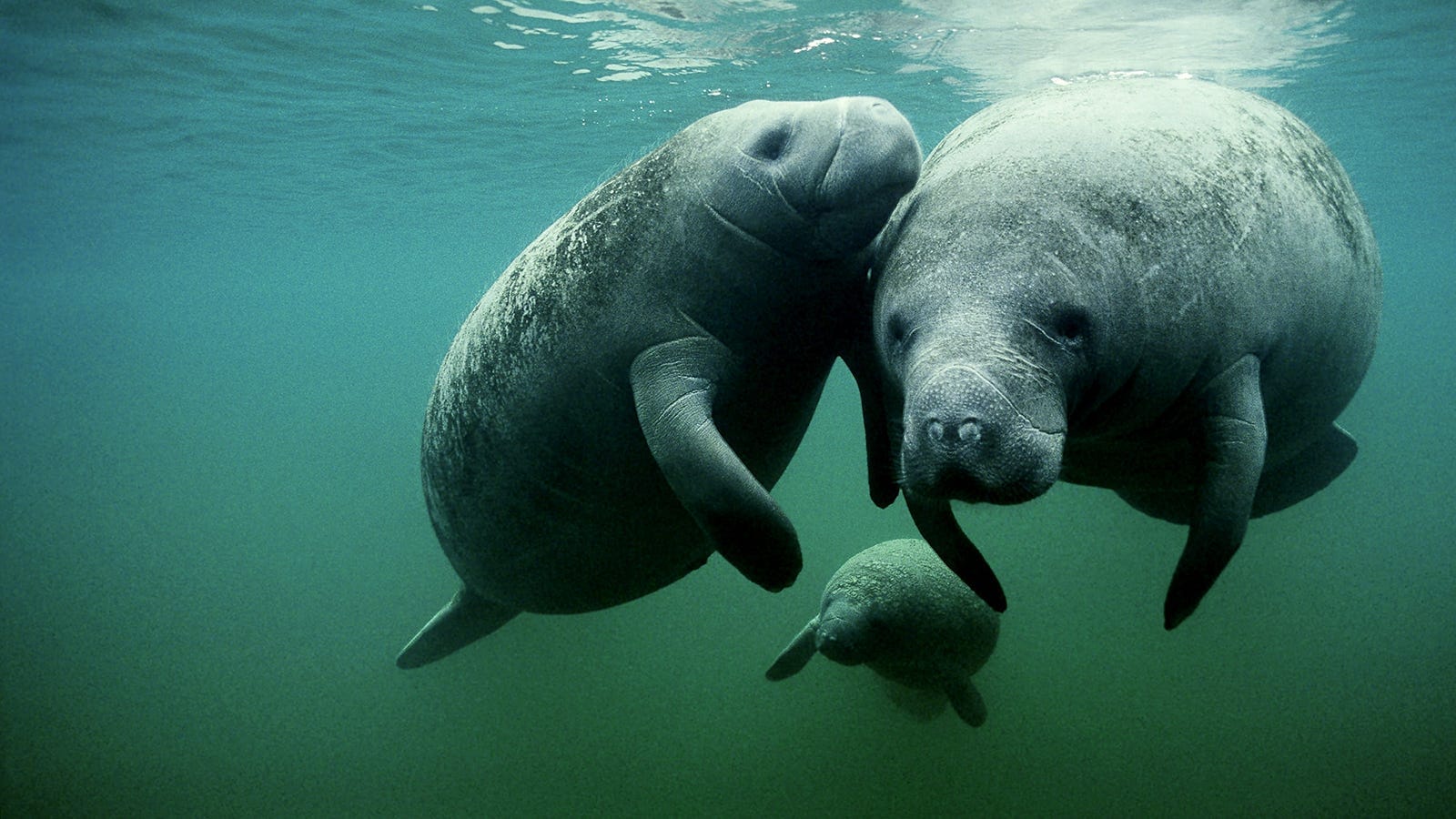
The manatee, one of the iconic animals of Florida. Our state even has a special manatee license plate (along with ones for sea turtles, panthers, and dozens of other things). There are actually three species of manatee in the world, but the most well known to you all is probably the West Indian manatee, Trichechus manatus. It is not endemic to just Florida, but can be found throughout the Caribbean and parts of the Gulf of Mexico.
While often called ‘sea cows’ because of their herbivorous diet and lazy grazing behavior, manatees are actually most closely related to elephants. There are marine mammals that descend from even-toed ungulates (the group that includes cattle): whales and dolphins.
The other two species of manatee are primarily freshwater riverine animals, one native to the Amazon and the other to West Africa. The West Indian manatee, however, is also perfectly comfortable in salt water. Instead of salinity, what matters more to manatees is water temperature. Manatees don’t have a thick layer of body fat for insulation like many other marine mammals. This means that they can’t handle cold temperatures very well. When the water gets colder, they tend to swim upstream or, more recently, find a place where humans have made the water artificially warmer (commonly power plant outflows).
These animals are intelligent, peaceful, and playful. They also have one very neat unique feature. For those with cats, you may be familiar with the sensitivity of whiskers when it comes to tactile stimuli. Now imagine an animal with those hairs covering much of its body, not just a few on its face. Manatees are that animal, though the density of the hairs in the facial region is much higher (by a factor of about 30) than the rest of the body. This allows them to distinguish texture and sense water movement to aid in navigation.

I took this picture by a small lagoon off of the Gordon River in Naples. The lagoon also serves as the location of the boat dock for the Conservancy of SW Florida, a place that I have volunteered at frequently. Manatees appear there every once in a while, but this particular individual was doing something I had never seen a manatee do before.
Manatee diets are primarily plant-based with some invertebrates or small fish. The vast majority of the food intake for manatees are sea grasses of various types. Manatees don’t have a high metabolism, so they do not need to eat as much as some mammals, but they also do not require large amounts of activity in order to graze. So imagine my surprise when this particular manatee was not grazing on grasses at the bottom of the river, but instead going out of its way to lift its head out of the water and munch on the nearby mangroves.
I suspect behavior like this isn’t all that rare in manatees, but it was still exciting to see. Unfortunately, all three species of manatee are listed as vulnerable (one step below endangered). Part of this is due to the overall vulnerability of these animals to extreme events such as cold snaps and red tide compared to other species. In addition, because they are slow and often occupy the same waters as people, boat strikes are a frequent problem for the West Indian manatee especially.
Some might think that losing a slow and ‘lazy’ animal like this one wouldn’t matter all that much. That is a foolish assumption because everything is connected. Ecology is the study of those connections and, while some are incredibly critical, removal of any one can potentially disrupt the entire system. However, there’s no need to take my word for this. Think logically about what might happen if you remove a species from an ecosystem, using the manatee as an example. Their diet is mainly sea grasses, so removing the manatee could cause a proliferation of those grasses, causing them to crowd out other things. This could lead to a cascading effect that would alter the function and makeup of the whole system.
Why should that matter to us? Because, like it or not, we are still a part of these systems. It can be easy to forget this, especially because the average person is not always aware of the connections as they go about their day to day lives. Disrupting the system can cause big problems for other species, including Homo sapiens. For next time, I’ll talk about a major example of that here in Florida: mangroves.